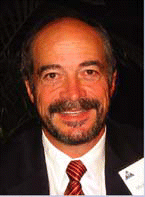Editor’s note: Dr. Setzen disclosed that he has done work with Gyrus-ACMI, Brain Lab, and Acclarent.
Explore This Issue
May 2007MARCO ISLAND, FL-Balloon sinuplasty-still a controversial area for otolaryngologists-appears to be gaining favor, although functional endoscopic balloon remodeling is still in its infancy, said Raymond Weiss, MD, medical director of the Sinus Center of the South in Ocean Springs, MS.
In a panel discussion on sinuplasty at the 2007 combined sections meeting of the Triological Society, Dr. Weiss explained some of the uses of the catheter-balloon procedure. He was joined by Michael Setzen, MD, Clinical Associate Professor in Otolaryngology at the New York University School of Medicine and Chief of the Rhinology Section at North Shore University Hospital in Manhasset, NY, who explained how practitioners can bill for sinuplasty using current procedural terminology (CPT) codes.
Dr. Weiss said that doctors should not look at sinuplasty as a new procedure but rather as a tool or technique that can help perform the common treatments that are often accomplished using endoscopic sinus surgery tools-especially the endoscope.
Functional endoscopic balloon remodeling is a new technique using a new tool to alternately perform a known surgical procedure, Dr. Weiss said. Sinuplasty is a new technique in performing endoscopic sinus surgery-not a new procedure but rather a new tool that further reduces mucosal damage and advances us toward our ultimate goal of improving function with maximal mucosal preservation.
Dr. Weiss noted that in traditional endoscopic sinus surgery the choice for preservation was previously dictated by degree of destruction. The concept of maximum mucosal preservation remained in the forefront of the clinician’s thinking. However, this still is within the realm of tissue removal, he said. The advent of new endoscopic sinus surgery tools have allowed us to begin exploring new levels of tissue preservation that were previously unrealistic-while still improving function.
He said that when patients and doctors are dealing with isolated sinus disease, the choice of treatment is fairly clear for those who have balloon remodeling available. However, the picture is less clear when treating chronic sinusitis and determining how to fit in this new tool when the patient is also going to require the use of traditional destructive techniques, he added.
Sinuplasty Concepts
Dr. Weiss said the basic concepts for performing sinuplasty are:
- To maximize mucosal preservation.
- To give the patient a choice in treatment and a choice that preserves tissue.
- To give the sinus a chance to function by remodeling the existing outflow tract.
- To burn no bridges, by taking a step-by-step minimally invasive approach to treating sinus disease.
In general terms, Dr. Weiss said that the clinician, in performing sinuplasty, first must gain access to the sinus with a soft flexible wire. Then a balloon with specific characteristics is advanced along the guidewire until it is in position. Then, by pressurizing the balloon slowly, the clinician can moving the eggshell-thin bone, which in turn moves the attached mucosa. The technique, Dr. Weiss said, minimizes any destructive component of surgery.

Leave a Reply